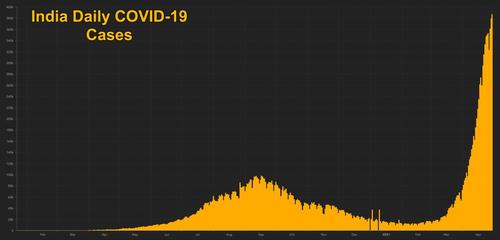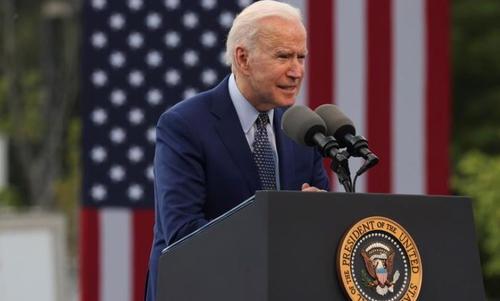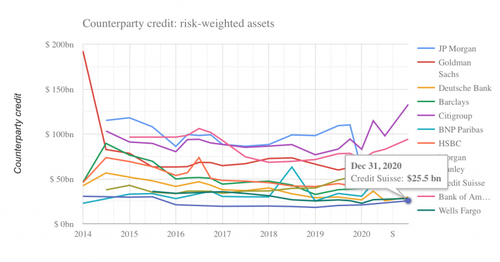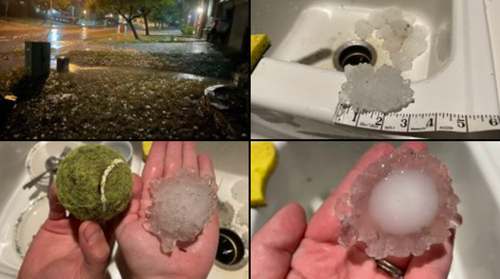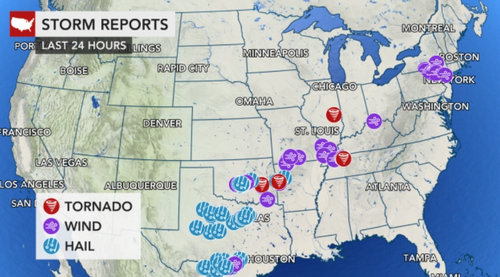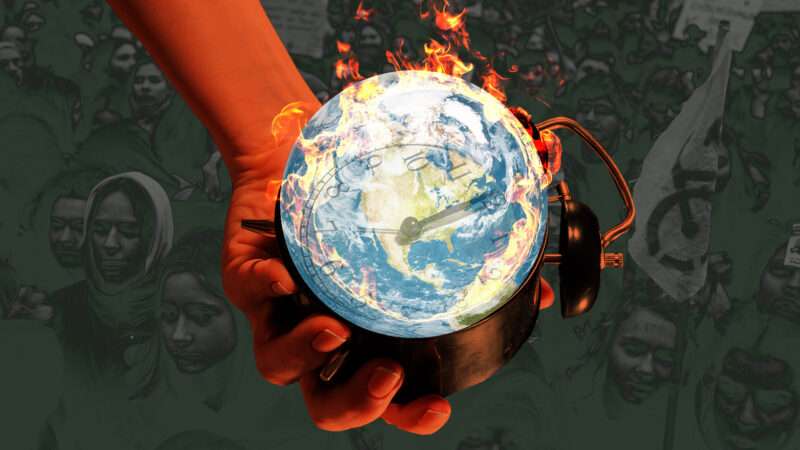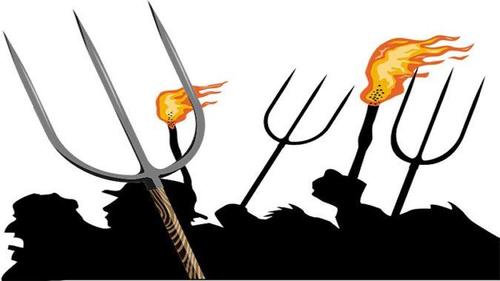Please enjoy the latest edition of Short Circuit, a weekly feature from the Institute for Justice.
In Hamen v. Hamlin County, the South Dakota Supreme Court recently grappled with the question of whether an innocent property owner should get a remedy, in the form of just compensation or damages, for a SWAT raid that destroyed parts of a mobile home and cost the property owner $20k to repair. (Turns out the suspect wasn’t in the home). It’s a question that IJ is litigating right now in a separate case. And it’s also a question that has divided federal and state courts, writes IJ Attorney Anya Bidwell over at the Federalist Society’s State Court Docket Watch.
- Boston’s School Committee revises admissions procedures for the city’s three most elite public schools, switching from a primarily GPA-based procedure to a procedure that also incorporates student income and zip code. A coalition of parents and students sue, alleging that the changes discriminate against white and Asian students. After losing a request for a preliminary injunction, the coalition seeks an injunction pending appeal. First Circuit: Which we deny. The policy may result in reduced white/Asian admission, but it is based on race-neutral criteria and was not a pure proxy for race.
- Harvard Law grad with a variety of learning disabilities is denied testing accommodations for the New York bar exam, fails twice, losing a prestigious law firm job as a result. After passing the exam on a third attempt (this time with accommodations), the young lawyer sues, alleging violations of the federal Rehabilitation Act. Second Circuit: But the suit is barred by 11th Amendment immunity. An exception for state agencies that receive federal funds covers only the state’s Courts of Original Jurisdiction, which receive funds but do not supervise the bar.
- In 2012, state and federal authorities in Maryland begin investigating a chain of pharmacies for Medicaid fraud. Search warrants are executed. Pharmacies are shuttered. Owner is indicted. Owner is convicted. Government demands 12 years’ imprisonment followed by deportation. After which Owner is . . . granted a new trial? After it turns out the inventory calculations the prosecutors used were fundamentally flawed? And then it turns out the government destroyed three boxes of key documents as “part of a general cleanup of boxes of paper”? Which leads to the criminal court’s dismissing all charges? And NPR’s using the phrase “colossal screw-up” in a headline about the case? Yikes! Fourth Circuit: Yikes it may be. But the pharmacy owner can’t bring Bivens claims against any federal officials because (all together now) “these claims would extend the Bivens remedy into a new context.” Also, the state prosecutor who was seconded to the federal case is entitled to absolute immunity for allegedly fabricating evidence and spring-cleaning other evidence out of existence.
- Pretrial detainee in Bell County, Tex. jail is initially deemed a suicide risk, but the jail’s mental-health contractor takes him off suicide watch and places him in gen pop. He hangs himself two days later. His mother sues the mental-health professional, alleging deliberate indifference to her son’s serious medical needs. District court: Qualified immunity. Fifth Circuit: Wait. The mental-health professional was an employee of a private contractor, not the gov’t. So no qualified immunity. And there’s at least a fact question about whether the professional violated the detainee’s rights. To trial the case must go.
- Early in the pandemic, some sellers on Amazon reportedly began charging outrageous prices for N95 masks and other essential goods. In Kentucky, the state’s attorney general launches investigations into Kentucky-based sellers for violating the state’s price-gouging laws. The Online Merchants Guide sues the AG, invoking the extraterritoriality strand of the dormant commerce clause. Yes, you heard that right. Extraterritoriality! Buckle your seatbelts, gang. (In all seriousness, the extraterritoriality doctrine is endlessly fascinating.) District court: That seems like a winning theory; preliminary injunction. Sixth Circuit: We disagree. Any effect on out-of-state commerce is not the result of Kentucky’s law, but of Amazon’s pricing structures. Preliminary injunction vacated.
- Pursuing a suspect, St. Louis police officer says that he’s “going to kill this m***f***, don’t you know it”—which he does. The officer is acquitted of murder; protests and riots erupt. Police order people to disperse, deploy mace, and arrest scores of people. The trial court enters a preliminary injunction that has now been in effect for more than three years. Eighth Circuit: Too long. The case needs to be resolved on the merits, so the preliminary injunction must be dissolved or replaced with a permanent injunction within six months. We’re also super dubious of the merits of the claims.
- The Speedy Trial Act, which was enacted to effectuate the guarantees of the Sixth Amendment, sets time limits for steps in the criminal adjudication process and enumerates delays that may toll those limits. One delay covers when the “ends of justice” outweigh the interest in a speedy trial—and it’s been flexed a lot during the pandemic. The Ninth Circuit brings us a pair of cases interpreting this language. In the first, the court holds that a pretrial detainee who has been held since August 2019 can continue to be held for a little longer under the Speedy Trial Act, but not much longer under the Due Process Clause. And in the second, the court reverses the dismissal of an indictment of a defendant who had been granted bond and had obtained eight trial continuances before jury trials were suspended.
- Everyone agrees Art Tobias did not kill Alex Castaneda. But that consensus was reached only after Los Angeles police interrogated the then-13-year-old, ignored his request for a lawyer, and convicted him on the basis of his false confession. Ninth Circuit: Qualified immunity can’t save you here. When a suspect says, “could I have an attorney,” you have to let him see an attorney. And at least one officer employed unconstitutionally coercive interrogation techniques as well.
- In 2020, the Department of State removed 3D-printed guns from its “Munitions List”—a de-listing that would ease various regulatory restrictions on said firearms. Twenty-two states plus D.C. sued, and a district court enjoined the change. Ninth Circuit: Congress has provided that decisions to add firearms to the Munitions List “shall not be subject to judicial review,” and that necessarily covers decisions to remove firearms from the list as well. Dissent: Jurisdiction-stripping provisions should be narrowly construed, not extended beyond their plain language. (Also dissent: On the merits, the Department’s rulemaking procedure violated the APA because the agency deliberately hid the fact that its proposed rule would encompass 3D-printed guns until after the comment period had closed.)
- Two California men are charged with murder based on the testimony of a confidential informant. Although the informant testifies at a preliminary hearing, during trial he invokes the Fifth Amendment and refuses to answer any questions. The court admits the man’s testimony from the preliminary hearing; the two defendants are convicted and sentenced to life. They seek habeas review, alleging a violation of the Confrontation Clause. Ninth Circuit: The Defendants’ lawyer got to question the witness at the preliminary hearing, even if the trial judge cut off some of that questioning. It wasn’t unreasonable for the state courts to find no Confrontation Clause violation.
- Nonprofits petition the EPA in 2007 to ban foods containing an insecticide, chlorpyrifos. EPA takes 10 years looking into it, finds evidence that the chemical is indeed bad, but doesn’t issue a rule, just delays everything. The Ninth Circuit says this was “a total abdication” of its statutory duties and orders it to you-know-what or get off the pot within 60 days. Dissent: Yeah, EPA took way too long, but wasn’t arbitrary and capricious in this very technical case.
- And in en banc news, the D.C. Circuit will reconsider its decision that neither the “procedural” nor the “substantive” aspects of the Due Process Clause apply to a Yemeni citizen who has been held at Gitmo without trial for more than 16 years.
This week, a federal judge in Tampa ruled that a $30k fine for too-tall grass is not an unconstitutional excessive fine, nor does it violate due process to decline to notify a property owner that he was racking up $500-per-day fines. It all started in in 2018, when Jim Ficken was out of town handling his late mother’s estate. He’d hired a friend to mow the lawn at his house in Dunedin, Fla., but the friend passed away unexpectedly. Jim mowed the grass as soon as he realized what was going on, but city officials refused to reduce the fine and even voted to authorize foreclosure of his home when he, a retiree on a fixed income, didn’t pay. Jim will appeal the district court’s decision. Read more here.
from Latest – Reason.com https://ift.tt/3u3N8f4
via IFTTT
